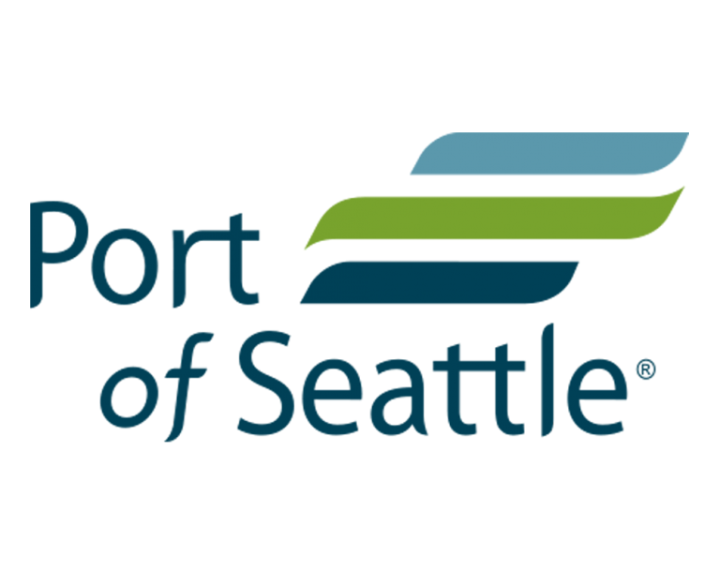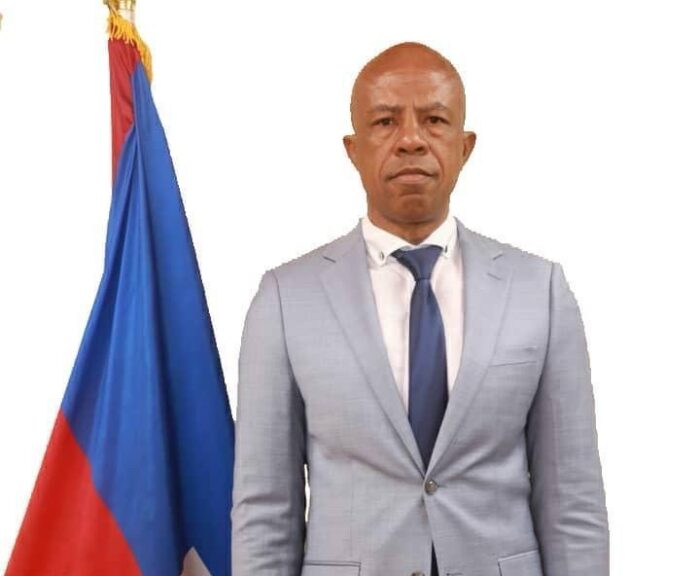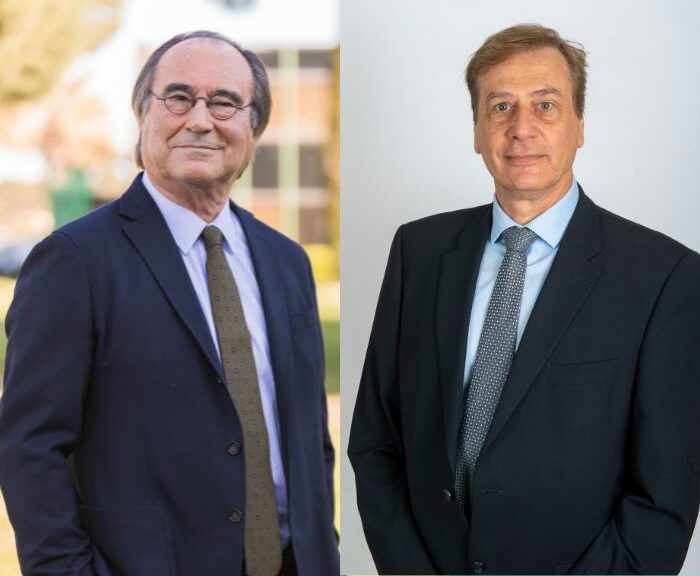The Port of Seattle is located in the State of Washington, Northwestern United States. In close connection with the City of Seattle and the King County, the Port Authority of Seattle tries to continue its development in a sustainable way. The port commissioners are even elected by the county citizens. It has already been a few years now since a dialogue was initiated with the community of the Duwamish valley. The citizens who live there are the most impacted by the externalities generated by port operations. As the AIVP found this initiative particularly interesting and some first results are already seen, we conducted an interview with Christina Billingsley, Senior program manager, environmental engagement, and Dre Avila, Community volunteer from the Duwamish valley.
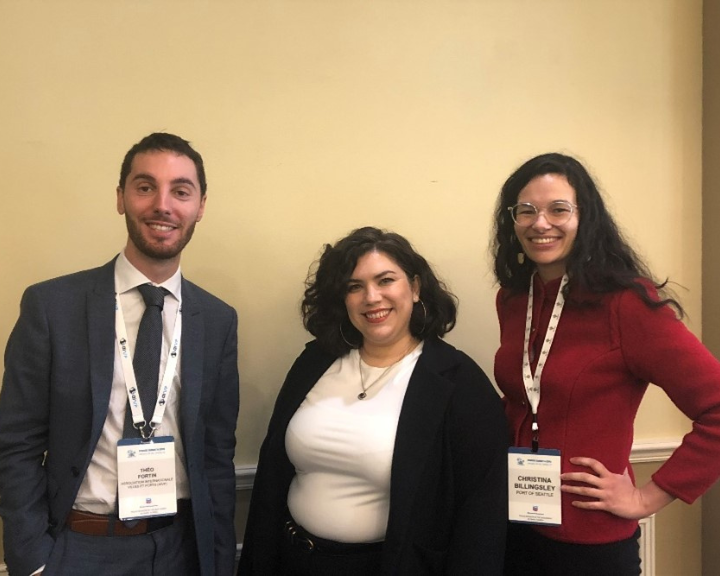
Port of Seattle’s Christina Billingsley. Picture: AIVP.
AIVP – Could you tell us what is the community advisory program and how does it function?
Dre Avila, Community advisor – In the Duwamish Valley, the community volunteers are the co-leaders of the liaison with the port. In total, it is a group of six people who took the role of “community advisors” as part of the “Duwamish Valley Port Community Action Team (PCAT)”. However, the port authority is looking for more such volunteers, as they want to expand the PCAT to include more diverse voices. The community volunteers have different specialties and backgrounds: environment, mobility, river management, etc and are all representing diverse racial, ethnic, gender and economic backgrounds. Living in the Duwamish Valley, between the port industrial area and the airport of Seattle, gives a sensibility to the relation with the port authority. This action-oriented advisory role requires between 20 to 40 hours a month, which is financially compensated by the port authority. The volunteers are deeply committed to the work, and even take some days off their regular employment to do this advocacy work.
Christina Billingsley, Senior program manager – Our primary focus is on community engagement to advance shared port-community outcomes for environmental justice. In 2016, the Port of Seattle created a new team specifically in charge of community relations connected to the port’s environmental impact. Thanks to a grant from the federal environmental protection agency, we designed a new program to address the negative historical and current externalities associated with the port industry.
Two near-port neighborhoods experiencing environmental justice challenges are highlighted in this program, which is formalized through a policy co-written by Port staff and the community advisors. The foundational principles of this group were: to create a relation of confidence, trust, and transparency; to facilitate the participation of the advisors; to make this group as inclusive as possible, so that the people most impacted and least heard are the ones actually leading in decision making.
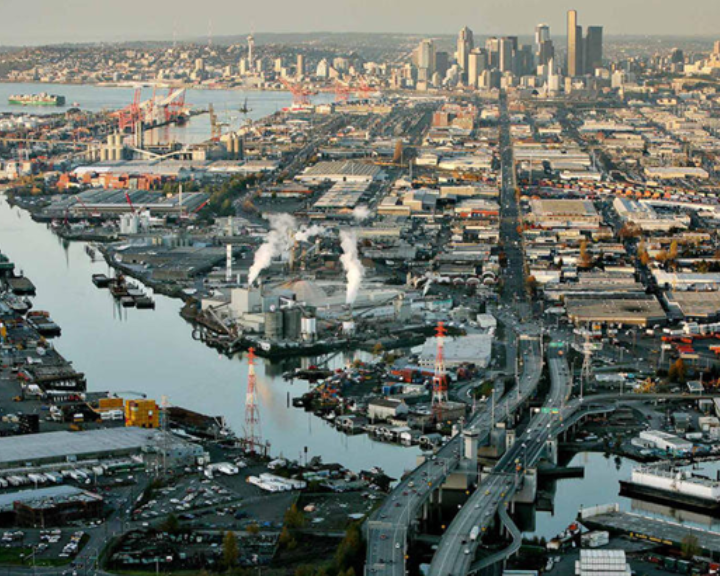
AIVP – What does this group bring to the Port authority, and the other way around, which are the advantages of such a program for the citizens?
Christina Billingsley, Senior program manager – The port can be a supporter of small businesses, participate in the protection of cultural heritage, and even become a touristic attraction. That is what we understood by interacting with the PCAT. They helped to us to become more aware of the new activities we could launch. We could say that they pushed us into being more creative, less focused on our jurisdiction only. Indeed, now that we have this permanent link with the community, we tend to invent new activities which we thought were “not possible” before.
Dre Avila, Community advisor – We have had the feeling of being “wedded for life” to the port, but without the ability to express ourselves. Now we intend to make our voice heard.
AIVP – How did you convince the port management to continue this program even after the termination of the federal grant?
Christina Billingsley, Senior program manager – From the beginning, even at the launch of the granted program, we needed to convince the leadership. Environmental justice, as a concept, can sound slightly intimidating and threatening “frontal”. We discussed a lot with our management, since these were entirely new ideas we wanted to implement. However, we had the scientific data we needed to make the case, and the community partners willing to work with us, so we had an advantage. Together, we helped our leadership understand the value in addressing these historic and current injustices and that it is a best practice for institutional sustainability and progress, with concrete advantages that achieve the Port’s mission: jobs creation, educating citizens about the port, fluid port-city relation.
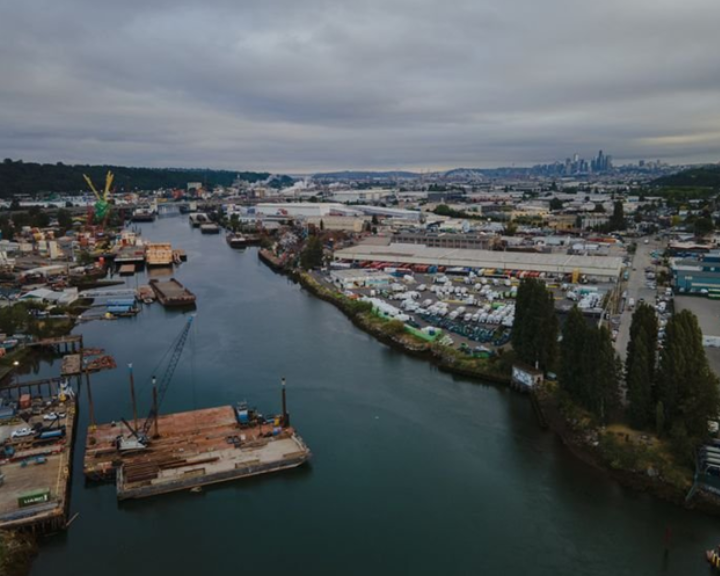
In 2019, in collaboration between the Port authority and the Duwamish Valley community, we have built on an existing youth internship program, which had been running for years at the Port of Seattle. We turned it into a program more oriented towards the diversificationn and inclusion of our near-port community members into our workforce. We benefitted from piloting a program on this topic, which had given previous results to persuade our colleagues that we could successfully construct new programs.
The last step was to propose concrete actions to start the interaction with the community in a healthier and more holistic manner. For example, we financially sponsored long-desired community projects such as greenspace beautification, public art projects, and this created an atmosphere where people trusted our staff. Then, we were able to have shared meals together and dialogue to begin making more difficult decisions to advance our shared goals.
Dre Avila, Community advisor – Accountability and diversity are two keywords for this program. Community advisors are the representatives of the rest of the community, they are accountable to them. This position is based on volunteering your skills and talents to benefit the community in this relationship with the Port, but we must take it as a serious job. The other important aspect is that all community volunteers were able to follow a course to introduce them to the “equity, diversity, and inclusion” principles of environmental justice.
AIVP – How could this collaboration evolve to make it even more impactful in the future?
Christina Billingsley, Senior program manager – For 2023, our goal is to be able to connect the Community advisor group with other Port departments, not only the “community relations team”. At the same time, this team is a necessity to have one focal point for the relation with the citizens. However, all departments must be informed of what happens in relation with the community. This is a coordination effort that we want to pursue in 2023.
An asset for us is that some of our port commissioners, elected by the voters from our broader county (not just the city of Seattle), live themselves in the neighborhoods which surround the port area. They have a direct perception of the port’s externalities in their daily life. This is a positive evolution for the Port as an institution, since now more leaders in power better understand environmental justice challenges and are more willing to take action on them.
Dre Avila, Community volunteer – Clearly, we know the port will not move from this area. This situation has real impacts on our health: some studies suggest a difference of 13 years in terms of life expectancy, between the inhabitants of the Duwamish Valley and the citizens coming from other neighborhoods, further away from the port. Even if we must live with the disturbances that the port operations inevitably produce, we will not leave and go elsewhere. Rather than leaving this neighborhood that we cherish, we want to improve it. That is the reason why we will continue and intensify the work within the Community advisors’ group with the Port of Seattle
For more information, please visit www.portseattle.org/duwamishvalley or contact Christina Billingsley, Sr. Program Manager Environmental Engagement at the Port of Seattle: Billingsley.c@portseattle.org
